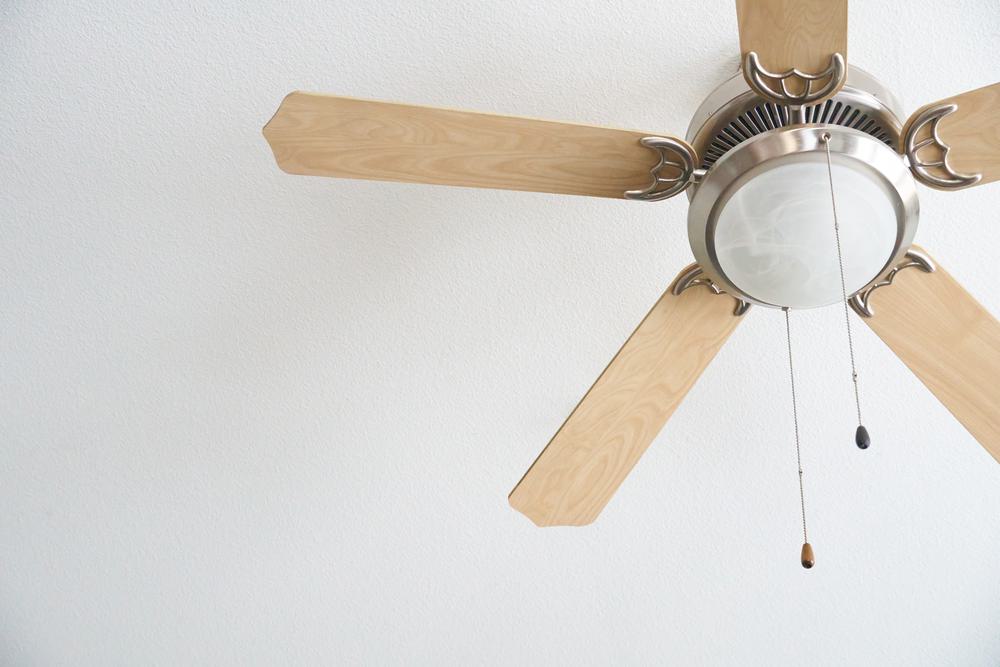
There are few things as annoying as a malfunctioning ceiling fan, especially during the warmer months. Whether your fan is making strange noises, wobbling, or simply not working, this comprehensive guide will help you diagnose and fix common ceiling fan issues.
To fix a ceiling fan, first identify the problem. If it’s not working, check the power supply, circuit breaker, wiring, and switch. If the speed control isn’t working, clean and lubricate the ball bearings or replace the capacitor. If it wobbles or shakes, tighten screws or balance the blades. If it’s noisy, tighten screws and lubricate bearings or balance or replace damaged blades. If the remote control isn’t working, replace the batteries or the remote itself. Always consult a professional if necessary.
Common Ceiling Fan Problems and Their Solutions
Before we delve into the solutions, it’s important to identify the specific problem you’re facing. Here are some common ceiling fan issues and their potential causes:
- Ceiling Fan Not Working: This could be due to a tripped circuit breaker, faulty wiring, or a malfunctioning switch.
- Ceiling Fan Speed Control Not Working Properly: This could be caused by dirty or unlubricated ball bearings, a faulty ceiling fan capacitor, or overheating of the motor.
- Ceiling Fan Wobbles or Shakes: This might be due to loose screws, unevenly installed blades, or a bent or damaged blade.
- Ceiling Fan is Noisy: This could be due to loose screws or components, unlubricated ball bearings, or damaged or unbalanced blades.
- Ceiling Fan Remote Control Not Working: This could be due to dead batteries, incorrect frequency settings, or a malfunctioning remote unit.
Now, let’s look at how to fix these issues.
How to Fix a Ceiling Fan That’s Not Working
If your ceiling fan is not working, the first step is to check the power supply. Ensure that the circuit breaker is on and that the room has power. If the circuit breaker has tripped, reset it. If there are any blown fuses, replace them. You can also use a circuit tester to check if the switch is working. If it isn’t, replace it.
Next, remove the housing cover on the ceiling fan to access the wiring. Check for any loose connections and secure them with wire nuts. If the fan is still not working, it might be due to a faulty motor or wiring issue, in which case you should consult a professional electrician.
How to Fix a Ceiling Fan Speed Control That’s Not Working Properly
If your ceiling fan’s speed control isn’t working properly, start by cleaning and lubricating the ball bearings. This can often help the fan operate more smoothly. If this doesn’t solve the issue, consider replacing the ceiling fan capacitor. If the motor is getting too hot, it might need to be replaced.
How to Fix a Ceiling Fan That Wobbles or Shakes
If your ceiling fan wobbles or shakes, start by tightening any loose screws on the fan blades, motor, mounting hardware, and downrod. If this doesn’t fix the issue, check the blades for any damage and replace them if necessary. If the fan continues to wobble, consider using a fan balancing kit to even out the blade weight distribution.
How to Fix a Noisy Ceiling Fan
If your ceiling fan is noisy, start by tightening any loose screws or components. Next, clean and lubricate the ball bearings. If this doesn’t resolve the issue, check the blades for damage or imbalances and replace or balance them as needed.
How to Fix a Ceiling Fan Remote Control That’s Not Working
If your ceiling fan remote control is not working, start by replacing the batteries. If this doesn’t solve the issue, try resetting the remote control by removing the batteries, waiting for about 10 seconds, and then replacing them. If the remote control still doesn’t work, consider replacing it with a universal model or a replacement recommended by the fan’s manufacturer.
When to Seek Professional Help
While many ceiling fan issues can be resolved with some basic troubleshooting, some problems require professional help. If your fan is not turning on, making excessive noise, wobbling or shaking, or if there’s a burning smell coming from the fan, it’s best to consult a professional electrician or the fan’s manufacturer.
Conclusion
Fixing a ceiling fan may seem like a daunting task, but with a bit of patience and the right tools, you can often resolve common issues yourself. However, always remember to prioritize safety – turn off the power at the circuit breaker before working on your fan and don’t hesitate to seek professional help if needed. Happy fixing!
Frequently Asked Questions
What is a ceiling fan capacitor and how does it work?
A ceiling fan capacitor is a small, cylindrical object that stores and releases electrical energy. It’s responsible for starting the motor and controlling the fan speed. When you turn on the fan, the capacitor releases a burst of energy to start the motor, and then continues to release energy in smaller amounts to keep the motor running.
What is a circuit tester and how do I use it?
A circuit tester, also known as a voltage tester, is a device used to determine whether an electrical circuit is properly grounded, has correct polarity, and is receiving power. To use it, you simply insert the tester’s probes into the outlets or touch them to the wire you’re testing. If the circuit is working properly, the tester will light up or make a noise.
How do I lubricate the ball bearings of a ceiling fan?
To lubricate the ball bearings of a ceiling fan, you first need to turn off the power and remove the fan from the ceiling. Then, remove the motor housing to expose the bearings. Apply a few drops of a light machine oil or a product specifically designed for fan maintenance. Make sure not to over-lubricate, as this can cause the oil to drip onto other parts of the fan.
What is a fan balancing kit and where can I get one?
A fan balancing kit is a tool used to correct imbalances in ceiling fan blades that can cause wobbling. The kit typically includes weights that you can attach to the fan blades to balance them. You can buy a fan balancing kit at most home improvement stores or online.
How do I know when to replace the motor of my ceiling fan?
If your ceiling fan is not working even after troubleshooting other components like the power supply, wiring, and capacitor, the problem might be with the motor. Signs of a failing motor include a burning smell, excessive noise, or the fan running very hot. In these cases, it’s usually best to replace the motor or consult a professional.












